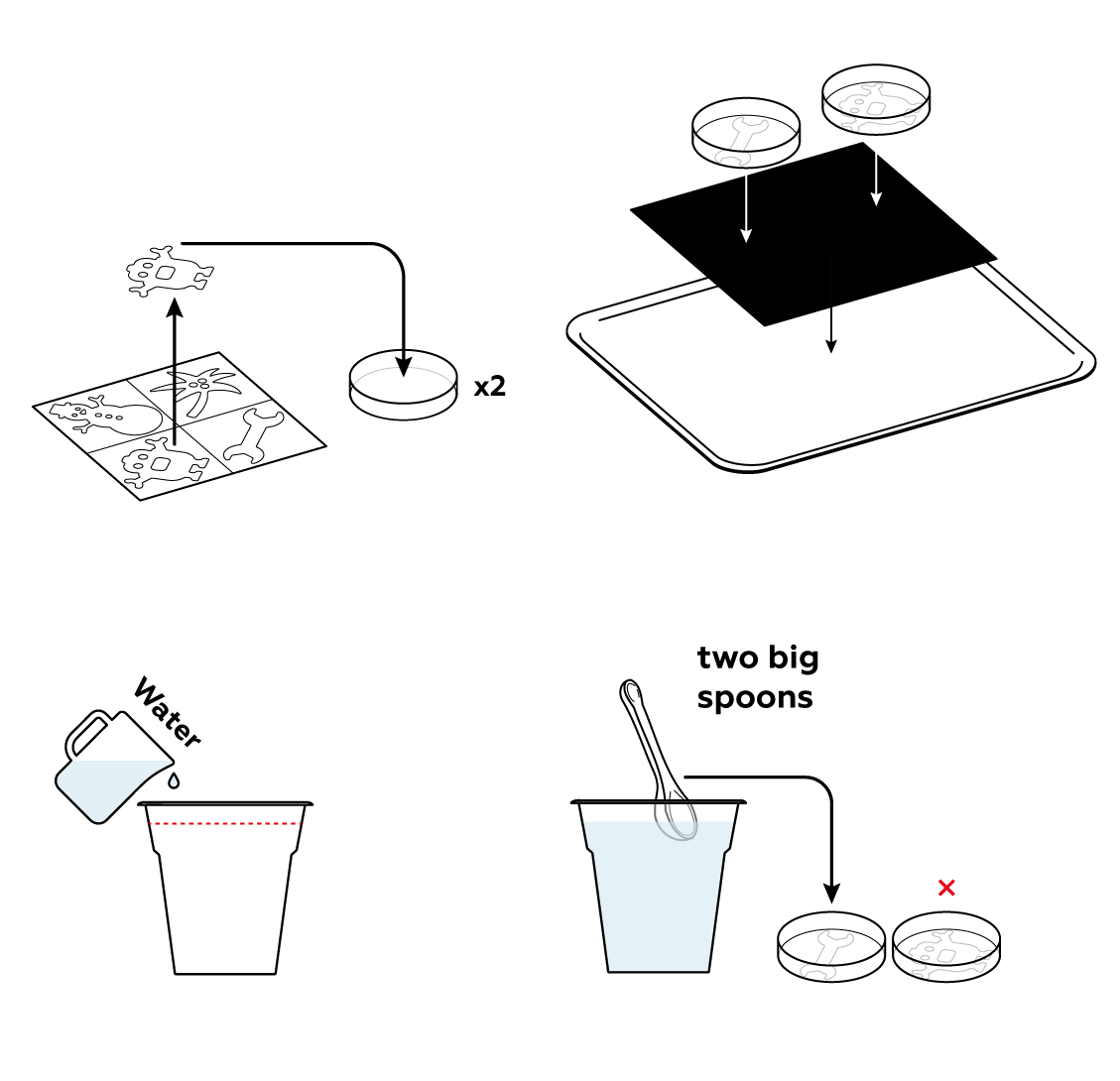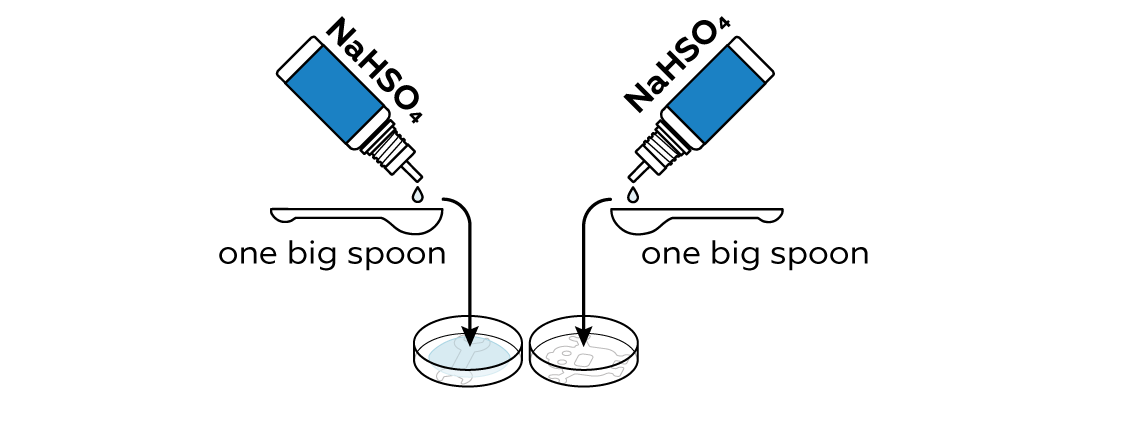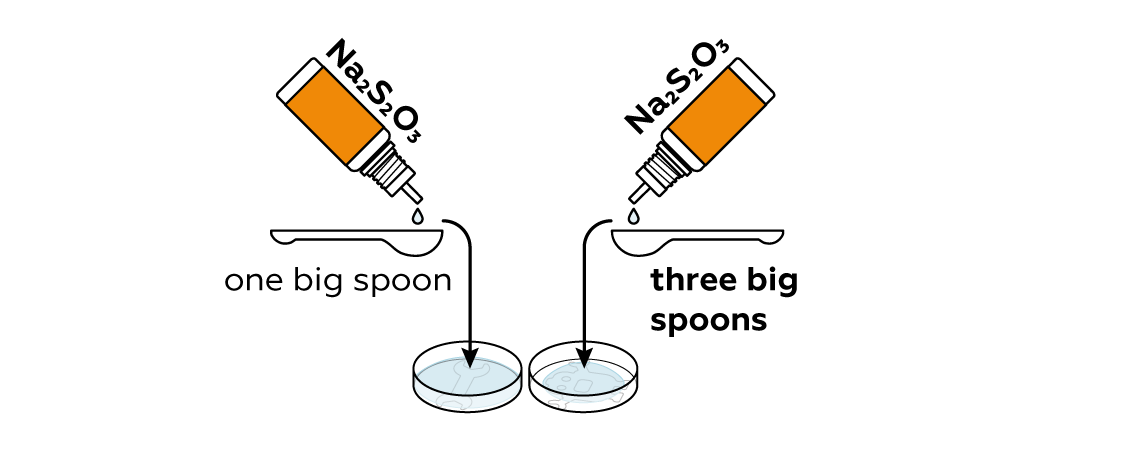Sulfur Moon
Capture a mystical sulfur fog in a Petri dish!
Reagents
Safety
- Put on protective gloves and eyewear.
- Conduct the experiment on the safety underlay.
- Observe safety precautions when working with boiling water.
- Do not allow chemicals to come into contact with the eyes or mouth.
- Keep young children, animals and those not wearing eye protection away from the experimental area.
- Store this experimental set out of reach of children under 12 years of age.
- Clean all equipment after use.
- Make sure that all containers are fully closed and properly stored after use.
- Ensure that all empty containers are disposed of properly.
- Do not use any equipment which has not been supplied with the set or recommended in the instructions for use.
- Do not replace foodstuffs in original container. Dispose of immediately.
- In case of eye contact: Wash out eye with plenty of water, holding eye open if necessary. Seek immediate medical advice.
- If swallowed: Wash out mouth with water, drink some fresh water. Do not induce vomiting. Seek immediate medical advice.
- In case of inhalation: Remove person to fresh air.
- In case of skin contact and burns: Wash affected area with plenty of water for at least 10 minutes.
- In case of doubt, seek medical advice without delay. Take the chemical and its container with you.
- In case of injury always seek medical advice.
- The incorrect use of chemicals can cause injury and damage to health. Only carry out those experiments which are listed in the instructions.
- This experimental set is for use only by children over 12 years.
- Because children’s abilities vary so much, even within age groups, supervising adults should exercise discretion as to which experiments are suitable and safe for them. The instructions should enable supervisors to assess any experiment to establish its suitability for a particular child.
- The supervising adult should discuss the warnings and safety information with the child or children before commencing the experiments. Particular attention should be paid to the safe handling of acids, alkalis and flammable liquids.
- The area surrounding the experiment should be kept clear of any obstructions and away from the storage of food. It should be well lit and ventilated and close to a water supply. A solid table with a heat resistant top should be provided
- Substances in non-reclosable packaging should be used up (completely) during the course of one experiment, i.e. after opening the package.
FAQ and troubleshooting
It’s fine! This won’t affect the experiment.
Yes, everything is alright. During the reaction, sulfur dioxide gas is released in the form of bubbles – its slight odor can be felt during the experiment. The bubbles pop so noticeably because they burst in a thin layer of liquid, which makes it much louder.
You can try preparing the concentrated solution first. And if you are a very curious scientist, you can prepare the solutions separately and time how long it takes the sulfur fog to form in each of them!
Step-by-step instructions
To get a better look at the reaction, you’ll need two Petri dishes against a black background.

The first ingredient is NaHSO4. The part you're interested in is the "H" in the middle: it stands for an H+ ion.

The second ingredient is Na2S2O3. Here, the important part is "S2O3". It stands for an S2O32- ion. The only difference between the dishes is the amount of Na2S2O3 you add.

Now watch what happens!

Expected result
The precipitate is formed at different speeds in different Petri dishes
Disposal
Please refer to local regulations when disposing of chemicals. Dispose of other solid waste with household garbage. Pour leftover solutions down the sink. Wash with an excess of water.
Scientific description
In a nutshell, two H+ ions 


, which you can observe as tiny bubbles, and pure sulfur S





